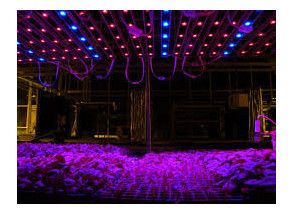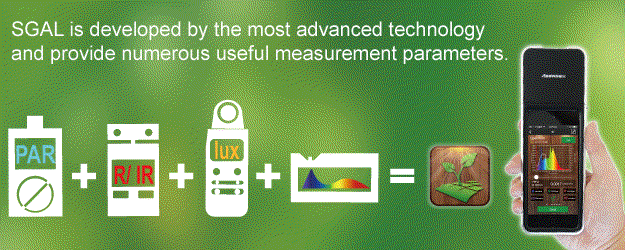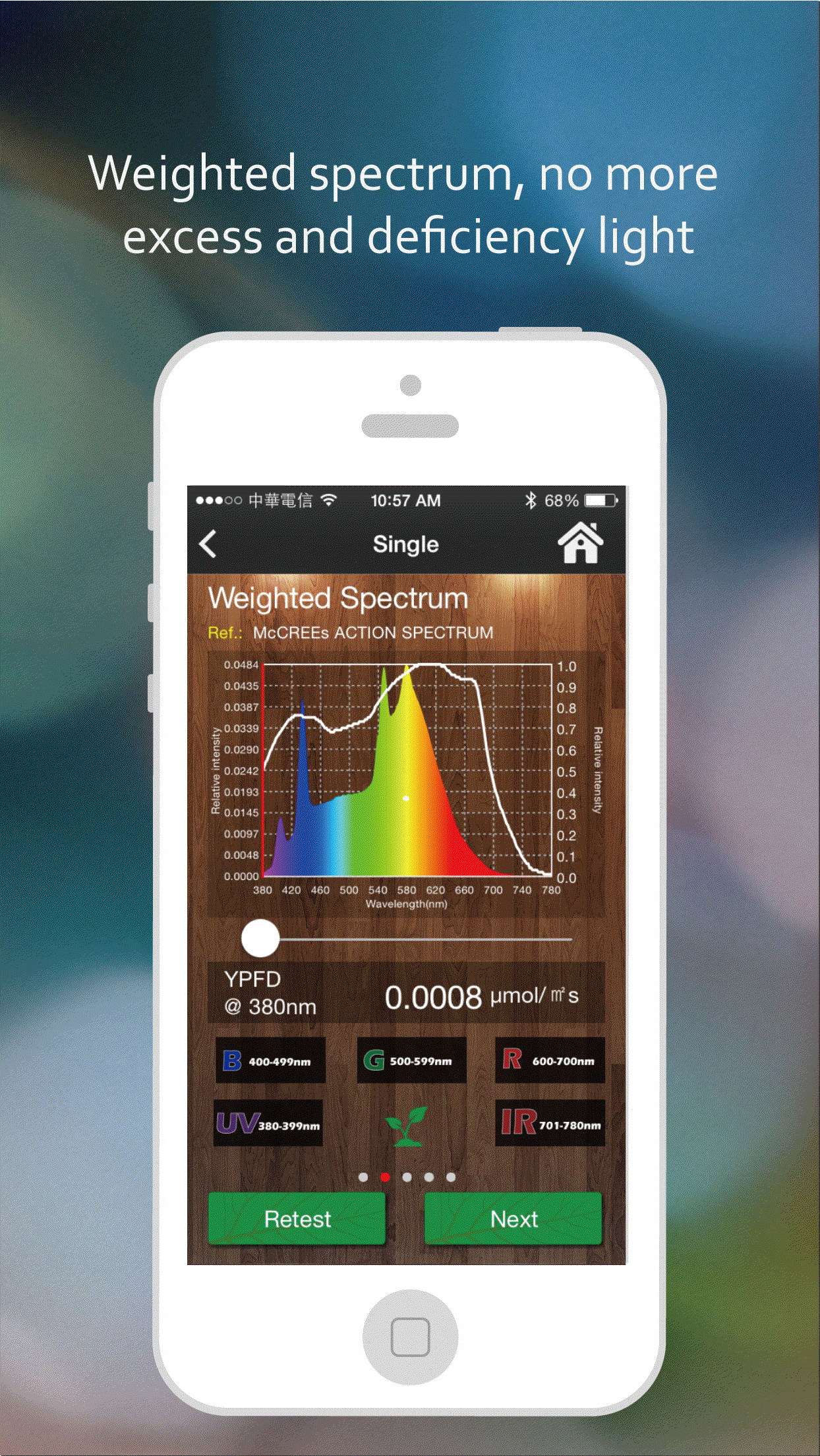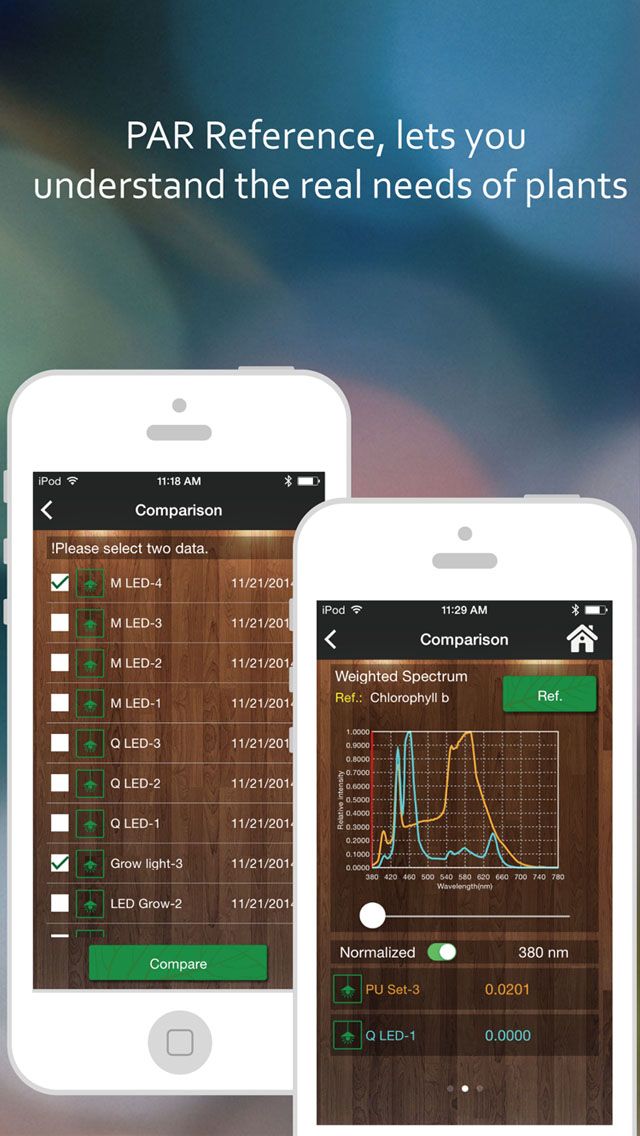Horticulture is the branch of agriculture that deals with science, art, technology and business of plant cultivation. Role of light illumination for plant growth is an important factor that needs to be considered and improved. The Photosynthesis process in plants uses water, carbon dioxide intake and incident light as the source of energy to produce glucose, an essential nutrient for the plant, and oxygen as shown in figure 1.

Figure 1: Photosynthesis Process
In the past, plant cultivators in green house environments always used either natural sunlight, High Pressure Sodium (HPS) or Fluorescent lamps to illuminate crops. There were certain disadvantages in using these light sources because natural sunlight is obviously only available during daytime and fluorescent lighting consumes energy, has a high temperature which prevents it from being placed close to the plant and contains toxic material such as mercury, making proper disposal costly.
The development of Light Emitting Diodes (LED) in the last few decades has introduced anew source of lighting to horticulture with many superior advantages. First of all the plant does need all wavelengths in the visible region (400-700 nm) in equal proportion. Photosynthetic Photon Flux (PPF) designates the range of visible spectral radiation which plants use in photosynthesis process. Plants use more of Red and blue light for photosynthesis than green as shown in Figure 2.

Figure 2: Absorption spectrum of green plants
The absorption spectrum of plants can be matched by using tunable LED’s as shown in Figure 3 below. This illumination source is much more suitable than an HSP source whose peak emissions widely differ from the absorption spectrum of green plants

Figure 3: Absorption spectrum of green plants
This illumination source is much more suitable than an HSP source whose peak emissions widely differ from the absorption spectrum of green plants as shown in Figure 4.

Figure 4: Rate of Photosynthesis and HPS intensity vs. Wavelength
Some wavelengths of interests for LED’s as applicable to plants growth are:
200-280nm or UVC radiation is present in sunlight but harmful to plants.
320-340nm may have a small effect on cryptochrome.
365nm is a “wavelength of interest”
439nm the blue absorption peak of chlorophyll A
450-460nm royal blue is absorbed by one of the peaks in beta-carotene It is a readily available LED wavelength, commonly used to excite the remote-phosphor in “white” LED lamps
469nm is the blue absorption peak of chlorophyll B
430-470nm range is important for the absorption of chlorophyll A and B. This is key for vegetative growth
480-485nm is the second absorption peak of beta-carotene
525nm this is a phototropic activator our researchers are still trying to find the chromophore of. It is apparent that plants are gaining direction and environmental signals from it and it affects internodal distancing. 525nm is also the wavelength of GaN or InGaN green LEDs commonly used in RGB and tunable applications.
590nm is key for carotenoid absorption. Carotenoids are both starch storing, structural compounds and nutritional compounds. With thanks to Jeffery Bucove who increased the harvest bulk of his plants by adding this wavelength.
590nm in addition is the phycoerythrin single absorption wavelength.
625nm is the phycocyanin single absorption peak.
642-645nm is the peak absorption point of chlorophyll B
660nm often called the super-red LED wavelength is important for flowering
666-667nm is actually the peak red absorption point for chlorophyll A.
700nm light is to be avoided. It confuses the phytochrome recycling systems in green plants.
730nm, often referred to as Far Red is important for phytochrome recycling. It is needed for all kinds of morphogenic processes. A few minutes of 730nm light treatment after the full light cycle is over will revert the Pfr (activated) to the Pr (inactive) form of the phytochrome chromophore. This resets the chemistry for another “lights-on” cycle, and may be useful in shortening the classic dark side of the photo-period. 735nm is the closest available standard LED wavelength to the above 730nm.
LEDs provide the unique opportunity for horticulture industry to use a narrow bandwidth of illumination. Several LEDs at different wavelengths can be combined to provide an illumination source which follow the plant sensitivity curve. Aside from this, there are several other advantages of using LED’s in horticulture which include
Geometry: Since radiation falling on a plant is inversely proportional to square of distance between the source of radiation and plant, it is advantageous to bring the plant close to the light source. This is possible for LED sources because they are cooler in temperature whereas for fluorescent lamps the produced heat will burn the leaf at close distances.
Efficiency: Electrical efficiency of LEDs are much higher than Fluorescent lamps which helps the crop grower to save in electrical bills.
Durability: By definition the lifetime of LED is defined as the duration at which the intensity drops to 70% of its original value and this is about 50,000 hours, much higher than a typical life time for a Fluorescent lamp.
Spectral quality: Spectral quality of carefully chosen LED illumination source, can have dramatic effects on plant anatomy, morphology and pathogen development.
Small size: Allows bigger space for installing the light source




